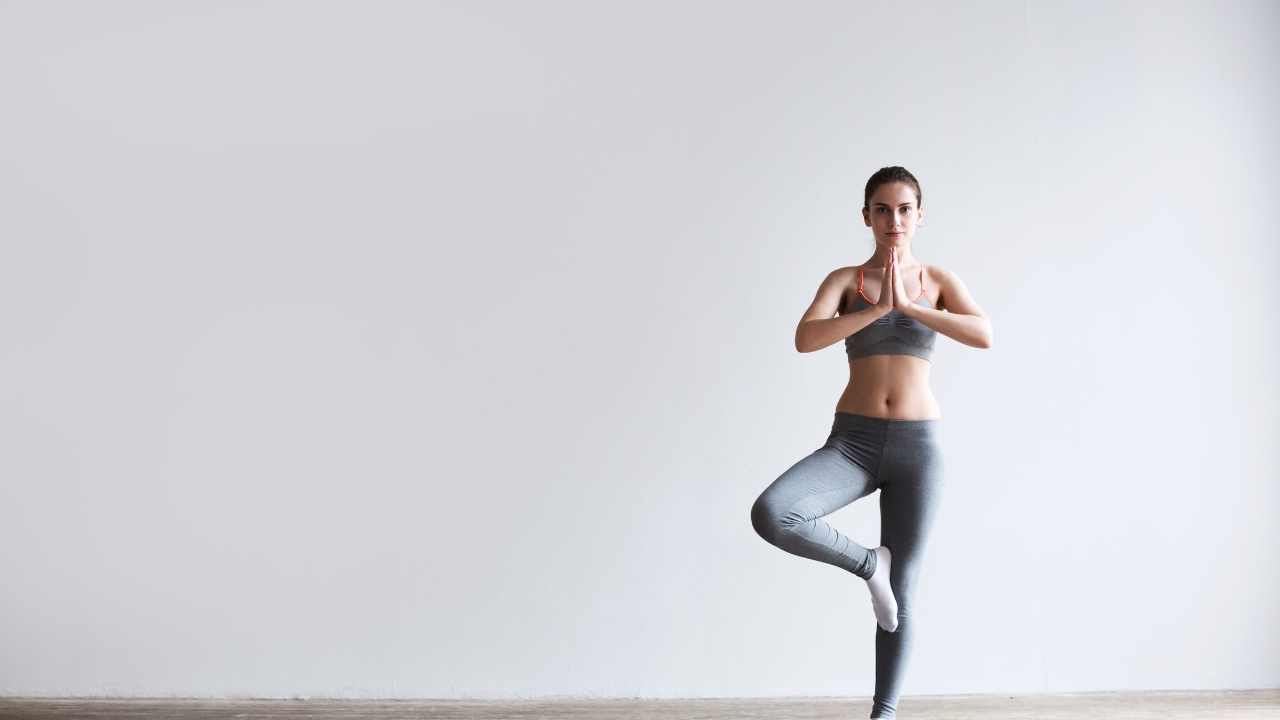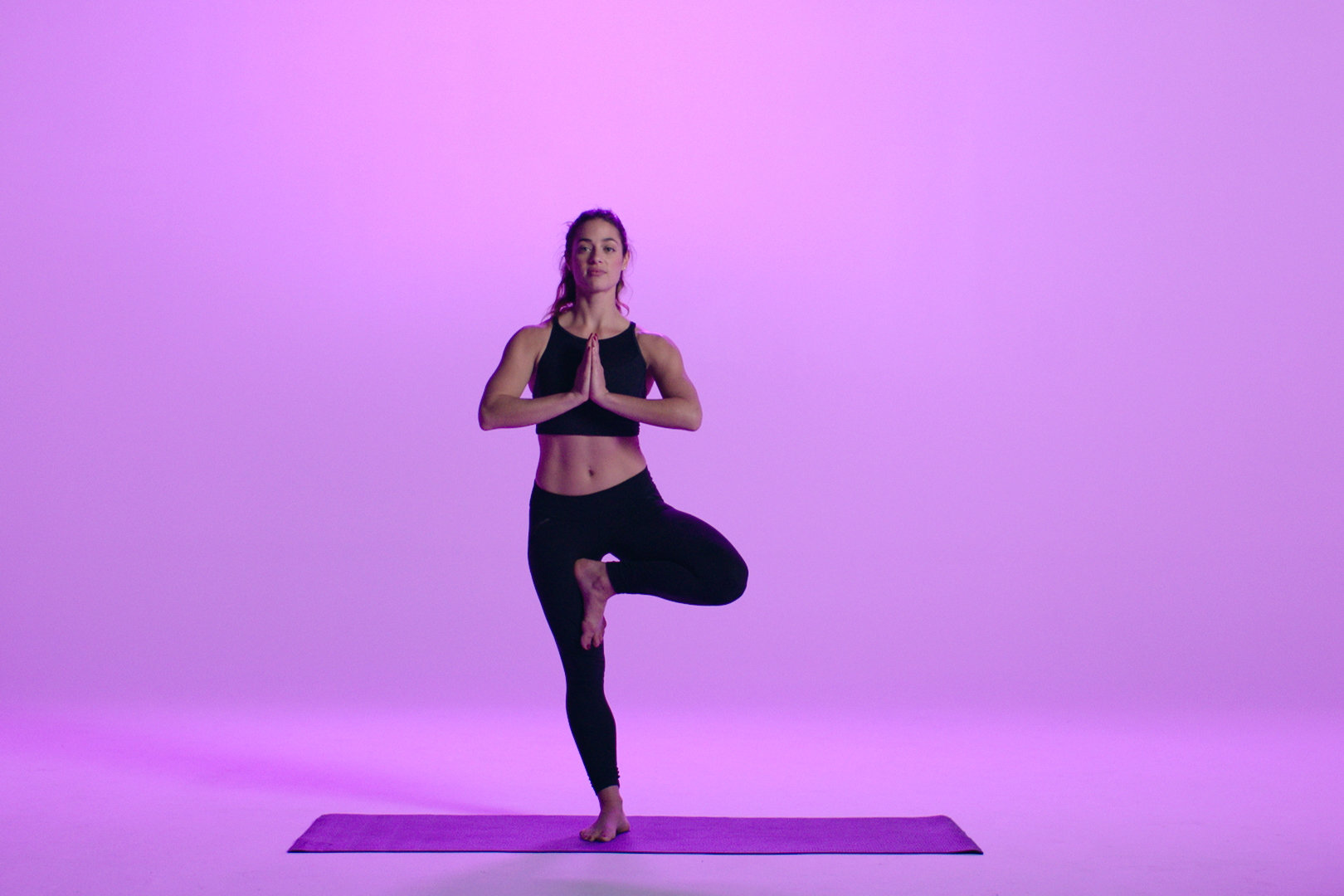
Many yoga poses put strain on the shoulders and can result in injury. It is crucial to know the anatomy and function of the shoulder joint before you start a new yoga practice. The three bones that make up the shoulder joint are the scapula (shoulder blade), clavicle (collar bone), and humerus (upper arm bone). Each bone has its own unique range of motion, and they all meet at an elbow joint.
Quads are responsible for knee extension. The gluteus maximus and the front and back thigh muscle are joined by the gluteus maximus. These muscles are responsible for hip flexion, abduction, and hip flexion. While these are not the only four muscles that contribute to yoga poses, they are integral to each pose. Each one of these muscles is crucial, even if you don't look at them individually. You'll feel the connection between each muscle in a specific pose as you practice yoga.
The hamstrings play a role in knee extension. They are derived the the ischial tubesity in the pelvic. They also play a part in hip extension. They are vital for many yoga poses. But, without proper alignment, these muscles can be hard to access. Although it is more difficult to align your arms with your chest, this will allow you to be more flexible and improve your balance. Once you are more familiar with the anatomy and workings of the hamstrings, it is safe to move on.

The hamstrings are another area that can be benefited from yoga. The hamstrings are responsible for knee extension, and they originate from the ischial tuberosity in the pelvic bowl. They assist in hip flexion as well as plantar flexion. Because the hamstrings control many body movements, many yoga poses require them. This helps you find the right one for your needs.
Do not overstretch the SI joint while doing the balancing poses. In the end, we should aim for a balanced, even range of motion and a strong core. It is also important to pay attention to the alignment of your pose. A joint that is too tight can cause pain in the knee. This can lead to injury. You can use props to help you align more properly.
Overmobilized Capulae: Although it can give the appearance that there is a twist to it, this does not happen in this position. The arm's position can also influence the spin of the spine. The meniscus moves backwards when it is fully extended. A properly aligned pelvis will allow the body's muscle to work in the right direction. Your spine and hips should be equally distributed.
For a smooth range of motion at the knee joint, the pelvic joints must be flexed. The pelvis and scapula must be in neutral positions. If they aren't, it can cause spinal flexion which may lead to injury. If this is the case it might be best to not attempt this pose. The meniscus should be pushed backwards while the leg is fully extended.

The pelvis is made up of three bones called femur and thighbone. They are rounded and form a cup-shaped structure. The pelvis, a bone with a ball-shaped top at the top and bottom of the thigh, houses the head of the Femur. The femur also hosts the lower leg bone. Each one of these three bones is slightly different in shape and angle. This can affect how easy and strong some yoga poses are.
Anatomy of the yoga poses is essential for beginners. You will find it easier to perform the correct postures when you are more familiarized with your body. David Katz, a world-renowned specialist in yoga and anatomy, gives a detailed explanation of the anatomy basics in his book Anatomical Position. He will explain the anatomy behind the major yoga poses as well as how they impact the body. It is easy to apply the anatomy to your everyday life once you have a good grasp of it.
FAQ
What is the fastest way to transform my body?
Change your mindset is the first step. First, you must decide to make a change.
Once you decide that you want to change, it is time to set a minimum of 3 months' commitment to your fitness goals.
The next step is to find the right program for you.
You also need to set realistic expectations. If you are not ready to dedicate the time and effort to reach your goal, do not spend money on a gym.
Instead, spend your free time exercising outdoors.
If you spend an hour a day walking around the block, you'll burn enough calories to lose 1 lb per week.
Once you have a plan, you can start to organize your life according to this plan.
This includes scheduling a time to exercise each morning before you leave for work and taking breaks throughout the day so that you can move.
Finally, you should reward yourself when you reach milestones. You could buy accessories or clothes that reflect your achievements.
Is it true that kidney stones can be caused by overeating protein?
Protein helps maintain healthy bones and tissue. But consuming too much protein can lead to calcium excretion through urine. This can lead kidney stones.
Not everyone who eats more than 2g of protein per kilogram (2.2 lbs) of bodyweight will get kidney stones. High amounts of protein can be consumed by some people without causing kidney stones.
By watching how much sodium you consume, kidney stones can be prevented. The kidneys regulate the amount of sodium they consume. Too much sodium can lead to kidney stones.
You can also try reducing your protein intake if you get kidney stones. Protein accounts for about half the daily caloric requirement of most adults. It is possible to lose weight by cutting down on your intake of proteins.
If you do decide to eat more protein, don't go overboard. Do not eat more than 20% of your daily calories from protein.
Why Metabolic Well-being is the Key to Aging Well
People live longer lives than ever before. But as they do, they're also getting sicker. And while we've made great strides in medical science, it's becoming increasingly clear that our current approach isn't working.
It's time to change our perceptions of health and aging. To achieve healthy aging, we must look at metabolic health as more than just weight loss. It is also important to consider overall wellness.
Your metabolism must be strong and healthy to ensure you live an active lifestyle for many years to come.
There are many ways you can improve your metabolic health. One of those ways is to incorporate these 7 foods into your diet:
-
Resveratrol in blueberries has been shown to support cell longevity. They are rich in antioxidants as well as vitamins C & E.
-
Lentils and pinto beans, which are legumes, provide great fiber and plant-based sources of protein. These nutrients help to keep blood sugar levels constant so they don't spike and crash.
-
Broccoli contains the antioxidant sulforaphane. This has been shown in studies to protect DNA. It may even be able to slow down cancer progression.
-
Chia Seeds contain high levels of fiber and omega-3 fat acids. They're also loaded with antioxidants and protein. All of these nutrients help promote heart health, brain function, and gut health.
-
Green Tea contains polyphenols called catechins. The catechins in green tea have been linked to reduced bone fractures, cardiovascular disease, cognitive decline, and diabetes risk.
-
Salmonis packed with vitamin D, low in saturatedfat and one of best sources of lean meat.
-
Walnuts are rich in omega-3s as well as antioxidants such alpha lipoic acids (ALA). ALA helps boost energy production and protects against inflammation.
Statistics
- The PRS enabled risk stratification for overall prostate cancer and lethal disease with a four-fold difference between men in the highest and lowest quartiles (HR, 4.32; 95% confidence interval [CI], 3.16-5.89). (pubmed.ncbi.nlm.nih.gov)
- Get free shipping and 25% off today. (healthline.com)
- According to the American Academy of Dermatology (AAD), men over 50 are at a heightened risk of developing it. (healthline.com)
- Candidates and applicants must pass all four tests at 70% (minimum level) to graduate from Basic Deputy U.S. Marshal (BDUSM) Training. (usmarshals.gov)
- Cardmembers earn 5% Back at Amazon.com with a Prime Credit Card. (amazon.com)
External Links
How To
What nutrients does a man need daily?
Healthy growth and development of men requires healthy nutrition. Your body needs vitamins, minerals and nutrients as well as carbohydrates, proteins, fats, carbohydrate, fiber, and other essential components.
The male body also requires specific nutrients at different times throughout the day. For example, when you sleep, your body uses energy from food to make hormones, antibodies, and enzymes. When you get up, protein is used to repair and build muscle.
Your body uses the night to break down fat and store extra energy as glucose. During this time, your body needs fewer calories but still needs sufficient nutrients. If you feel hungry, you may consider having a snack during the evening.
You need to eat enough carbs and protein when you exercise. Muscle soreness can occur if you work out hard.
You must ingest carbs and protein within two hours of training to prevent this. Your body will break down stored glycogen to provide glucose for energy.
After your workouts, you should eat protein immediately. This will prevent muscle tissue from being damaged while you sleep.
During periods of intense physical activity, your body produces lactic acid. Your body can build up lactic acid in the bloodstream which causes fatigue. To avoid this, you should eat foods rich in carbohydrates, such as fruits and vegetables.
Carbohydrates give your body the energy it needs to recover from strenuous exercise.
A healthy diet should include lean meats such as fish, eggs and milk, cheese, yogurts, beans, seeds, nuts, and beans.
All these foods are high-quality sources of protein. Protein promotes muscle growth and repairs damaged tissues. Protein is also necessary for the production of sex hormones such as testosterone.
A healthy skin, nails and joints requires sufficient dietary fats. Healthy men need to consume between 20%-35% of their total calories from fat.
Fat can help keep your heart healthy and protect you from cancer. It keeps your brain healthy and functioning well.
Vegetable oils, such as olive oil, sunflower oil or corn oil, soybean oil and peanut oil, can supply most of the fats you require.
These oils are rich in monounsaturated essential fatty acids (MUFAs). MUFAs reduce cholesterol and inflammation. They protect your cells against free radical damage.
Saturated fats (SFAs), are found mainly in animal products such as meat, milk products, and butter. SFAs can raise LDL ("bad") cholesterol levels and increase triglycerides. They can also increase weight and reduce belly fat.
Polyunsaturated oils (PUFAs), are found in plant-based foods like nuts, seeds and vegetable oils. PUFAs can improve cardiovascular function and reduce inflammation. They can also control blood sugar levels and cholesterol.
Low HDL ("good") cholesterol is a common cause of erectile dysfunction in men. The consumption of saturated fats raises bad cholesterol which in turn lowers good cholesterol.
Men who eat lots of red meat or pork can develop prostate problems. This is because these foods contain high amounts of nitrates. If cooked at high temperatures, the nitrates become nitrosamines. These compounds can lead to cancer.
Many processed meats are high in nitrites, and other dangerous chemicals. Avoid them.
The American Heart Association suggests that no more than two servings per week of red meat should be consumed. Instead, choose poultry and fish, legumes, tofu or whole grain bread as your main source of protein.